Negative Scenario II: The Integration of China’s Northeast and Russia’s Far East in the Silk Road Economic Belt
Gaye ChristoffersenRussia pursues a top-down, state-led policy formulated in Moscow to promote economic development of the Russian Far East and its economic relations with the Asia-Pacific. Can this policy be considered state-led industrialization with characteristics similar to Japanese, Chinese and South Korean models of state-led industrialization and export-led growth? Given Russia’s asymmetric economic relations with these economies, will Asia’s economies accept and adapt to Russian policies? Russia’s state-led efforts include: 1) a vision of Russian Far East development and integration with the Asia-Pacific; 2) trade promotion activities to introduce the opportunities in the Russian Far East to Asian audiences; and 3) geopolitical maneuvering to demonstrate Russia’s military and political importance in East Asia. Each of these themes is discussed in turn.
Visions of Russian Far East Development and Asia-Pacific Integration
The Valdai Discussion Club in June 2016 issued a vision for the Russian Far East and Russia in the Asia-Pacific, its fourth report on Toward the Great Ocean. Although the Russian Far East economy is based on commodities, the development model for it is to set up export-oriented manufacturing, and to attract foreign investors who will finance this industrialization. Offering priority development areas was criticized as insufficient. What was needed was a more radical restructuring of the way business was done there. Ivan Zuenko mentions the “inflexibility of the Russian bureaucratic machine” and state institutions that are ill-suited to successful state-led industrialization. If the Russian Far East were to model its development on the East Asian experience, the Valdai group suggests it would need to emulate Hong Kong’s low profit tax, Singapore’s efficient customs clearance, and South Korea’s connections to a power grid.1
Russia’s primary partner in East Asia, China, may be the least receptive to Russian state-led industrialization. China is currently behaving in East Asia as if it were reconstructing a sinocentric order in the sense that it expects Russia, as a weaker state, to bandwagon with Chinese political initiatives. A sinocentric order assumes asymmetrical economic relations with China’s periphery, using trade and investment to benefit the Chinese economy. China will export industrial goods to markets in the periphery, and the periphery will be a source of raw materials for Chinese industrialization. Chinese consider this each side’s comparative advantage and expect Russia’s comparative advantage to be energy and raw materials.
New state institutions were created for the governance structure guiding Russian Far East development. The Ministry for the Development of the Russian Far East, established in 2012, is the state institution in charge of its industrial policy. The ministry selected nine priority development areas, issued a list of investment projects, and created several development institutions:
• Far East Development Fund
• Far East Development Corporation
• Agency for the Development of Human Capital in the Far East
• Far East Agency for Investment Promotion and Export Support
These new state institutions exist next to old institutions where corruption is pervasive throughout the bureaucracy such as the office of the Vladivostok mayor. Some clean-up was required. On June 1, 2016, the mayor of Vladivostok was detained, charged with corruption, bribery, and embezzlement and brought to Moscow. Vladivostok has seen this before. A previous mayor, whose prison name was “Winnie-the-Pooh,” had a similar fate. Removing a few corrupt individuals does not strengthen state institutions. The Valdai Discussion Club calls for a wider decriminalization of key industries–fisheries, forestry, construction, and minerals extraction—which would increase foreign investor confidence.
Russian Trade Promotion with Asia
A good example of Russian promotion of export-led industrialization through trade and investment was the “Access Meeting China-Russia: Annual Investment Road Show” (中俄项目路演接洽会) in Shanghai, June 8, 2016. The trade show was supported by Russian banks Sberbank and VTB Bank, the Russia-China Financial Council, and the Ministry for the Development of the Russian Far East. The meeting claimed to offer a new paradigm in China-Russia cross-investment cooperation. Topics covered included: investments in regional projects; cross-border import-export cooperation; cross-border investment projects in the New Silk Route Initiative; Russian strategic investment projects and Chinese investment potential; cross-investment projects in energy, mining, and natural resources; export of Chinese equipment and technology; and Chinese investment in infrastructure, port construction, and agriculture.2
The trade show brochure included pithy quotations from key officials raising some of the key, perennial issues in Sino-Russian cooperation. Zhang Guobao, former vice-chairman, National Development and Reform Commission, stated when he was in Vladivostok: “On the one hand Russia is saying they have made a decision, on the other hand they are saying that no decision has been made yet. There hasn’t been any final information until now. This is regrettable.” Zhang Yujing, president of the Chamber of Commerce for Import and Export of Mechanical and Electrical Products in China, mentioned that to increase Chinese investment, Russia needed to improve its business climate and the transparency of its economic legislation. Alexei Gruzdev, head of the trade representation of Russia to China, mentioned the need to create industrial parks near the border for manufacturing products for export, exporting to those markets where China already has a strong position. Sino-Russian discussions have become more open in recognizing problems. It is a healthy sign that they can engage in problem solving.
The brochure mentioned that Shanghai was chosen because it is an international financial center, where it is possible to find investment and business partners, and where decisions get made.
The trade show was promoting investment and trade with the Russian Far East. It is not clear that there was any mention of the 2009 agreement on Northeast China-Russian Far East economic integration projects. It was held in Shanghai to attract investment from China’s wealthier coastal area. However, the Silk Road Economic Belt (SREB) was one of the themes of the trade show.
Geopolitical Strategy
The asymmetric Sino-Russian economic relationship leads to Russian behavior to demonstrate its geopolitical importance to China. This means that Putin attempts geopolitical balancing between China and Japan to obtain investment from both for the Russian Far East. This strategy reflects a fundamental disregard for appropriate behavior that might increase investor confidence in the Russian economy. Russia’s geopolitical strategy takes advantage of China’s effort to create the appearance of an alliance without bearing any real costs. Yan Xuetong is a major advocate, whose book envisions a bipolar structure in the Asia-Pacific region between the United States and China, with Russia bandwagoning with China. Although Yan is criticized by Chinese Russia specialists as misunderstanding Russian thinking, other Chinese also believe that Moscow should bandwagon with Beijing against Tokyo and Washington. Previous work by the author has demonstrated how vocally disappointed Chinese were when Russia did not side with China against Japan in 2012.3
Putin’s expected visit to Beijing in late June 2016 will be an opportunity to demonstrate Russia’s geopolitical importance to China and to gain greater leverage in negotiations and agreements he is expected to sign. Although Russians seek to avoid the Senkaku/Diaoyu issue, Putin made a geopolitical statement by placing three Russian navy warships near the Senkaku/Diaoyu Islands on June 9, 2016, at the moment a Chinese PLA (People’s Liberation Army) frigate entered the contiguous zone around these islands for the first time. The Russian Foreign Ministry claimed their ships were in international waters, while the Japanese Foreign Ministry claimed the Russian ships were also in the contiguous zone. Both the Japanese and Russian foreign ministries chose to downplay the Russian presence, while Beijing would claim Russia had sided with China in the Senkaku/Diaoyu dispute. A Global Times editorial further threatened that a closer Sino-Russian military partnership would emerge if Japan or the United States “crossed any lines.”4
From the sinocentric point of view, Russia was bandwagoning with a Chinese initiative. Also from the sinocentric view, China expects Japan, as a weaker state, to recognize China’s rise. The official Chinese phrase is “Japan should recognize China’s development,” which is code for China’s rise, and by recognizing it, be more accommodating to Chinese demands and interests.
Conclusion
There are signs of potential success for Russian state-led industrialization. The Valdai Discussion Club has envisioned what success would look like. The trade promotion show in Shanghai demonstrated determination to structure Chinese trade and investment in Russia’s preferred areas. However there is room for skepticism. A strong state using state-led industrialization with a carefully crafted industrial policy implemented by a well-trained and dedicated cadre of economists might try to overcome asymmetric economic relations. However, Putinism has weakened Russian political institutions, leaving Russia lacking many of the characteristics necessary for successful state-led industrialization.
Skepticism remains as to whether intensive economic integration of Northeast China and the Russian Far East will support Russia’s goal of state-led industrialization. Moscow first became aware of the East Asian model of development in the late 1980s as it puzzled over South Korean economic development, and began discussions on how Russia might adapt the model. More recently, Russians have discussed adapting the China model of development.
Northeast China-Russian Far East integration has already been incorporated into the SREB, and is probably the most detailed and planned section. Ivan Zuenko suggests that by 2015 everybody had forgotten about this integration, but it is more likely that the Chinese have incorporated it into the SREB. There is also widespread Russian skepticism of the SREB. The official Moscow-Beijing agreement to link SREB to the Eurasian Economic Union (EEU) has not yet been seriously implemented.
On the Chinese side, the year 2015 was the year of the social construction of “One Belt, One Road” (OBOR) through hundreds of OBOR books and articles published and hundreds of conferences held. Every university, research center, state-owned enterprise, and provincial government contributed to the discourse on OBOR. This rich outpouring of ideas helped to socially construct China’s Silk Road-based regional order. Some Russians have participated in these conferences but not in sufficient numbers to spread “Silk Road fever” in Russia.
Ivan Zuenko mentions that local authorities from both sides of the border talk a lot about economic cooperation but have no real interest in it, unclear what the benefits would be and considering the risks very large. For these authorities keeping the status quo is their main intent.
However, the status quo in the Russian Far East is not a stable equilibrium. According to National Human Development Reports done by the United Nations Development Program (UNDP), Primorski krai’s Human Development Index (HDI) in 2013 measured 0.841, lower than Moscow’s 0.931 and St. Petersburg’s 0.887, but close to the national average.5 A previous UNDP report in 2009 had found the Russian Far East to have a much lower HDI. According to the UNDP report, regional inequality in Russia is well-established and, no doubt, contributes to migration to wealthier areas. In Russia’s 2010 census, the Far East’s population was 6.3 million, down from 7.9 million in 1989.
On May 31, 2016 the Russian International Affairs Council hosted a Russia-China conference that openly discussed problems in economic integration. Chinese believe that the lack of progress in Sino-Russian economic integration and the majority of obstacles are due to the nature of the Russian state bureaucracy and its inability to think in market terms. Russians agree that the way the Russian state apparatus works impedes progress.6 However, a stronger and more responsive Russian state using state-led industrialization might more directly challenge some Chinese assumptions regarding the Russian Far East-Northeast China integration rather than implement the 2009 agreements.
The geopolitical maneuvering between China and Japan is not part of the East Asian model of development, but rather reflects Vladimir Putin’s preferred strategy. Russian geopolitical maneuvering is self-defeating as it makes Russia appear to bandwagon with Beijing as the weaker partner. Japan chose to de-emphasize the June 2016 incident but it does not boost Japanese investor confidence in the stability of the Russian economy and foreign policy. This will increase Russian economic dependence on China.
1. Towards the Great Ocean 4: Turn to the East: Preliminary Result and New Objectives (Valdai Discussion Club Report, Moscow, June 2, 2016), http://valdaiclub.com/files/10920/ , 17-22.
2. Additional information on Access Meeting China-Russia: Annual Investment Road Show can be found at: http://www.cn888ru.com/cn.
3. Gaye Christoffersen, “The Sino-Russian Partnership in the Asia-Pacific,” Russian International Affairs Council, September 19, 2013, http://russiancouncil.ru/en/blogs/dvfu/?id_4=693.
4. “Why does Japan fear close Sino-Russian ties?” Global Times, June 12, 2016, http://www.globaltimes.cn/content/987736.shtml.
5. United Nations Development Program, National Human Development Report for the Russian Federation 2013 (Moscow: 2013).
6. Ksenia Zubacheva, “Re-thinking Russia’s pivot to China,” Russia Direct, June 2, 2016, http://www.russia-direct.org/analysis/re-thinking-russias-pivot-china.
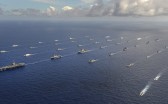
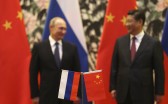
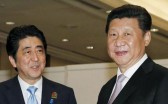
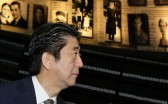
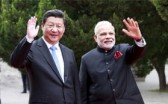
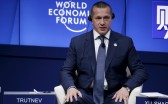
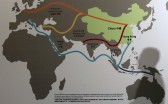


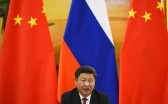
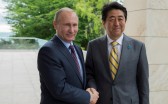
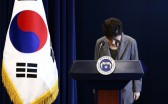
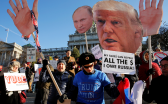
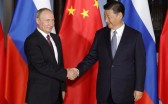
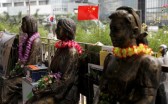
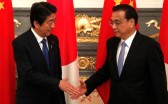
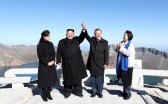
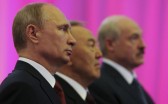
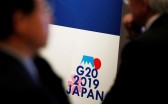



 Print
Print Email
Email Share
Share Facebook
Facebook Twitter
Twitter LinkedIn
LinkedIn